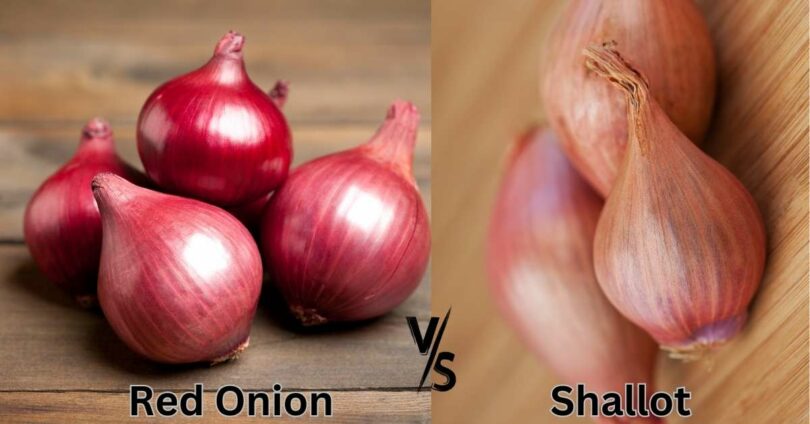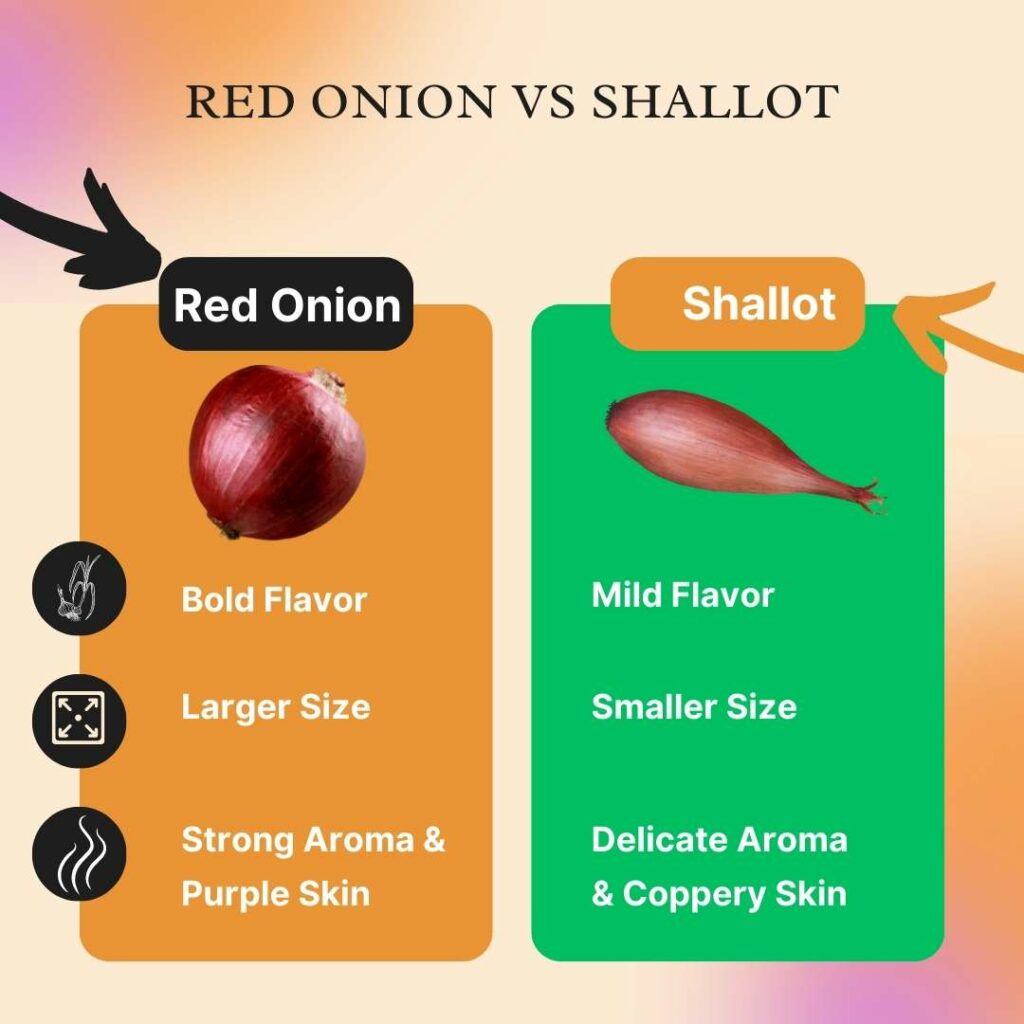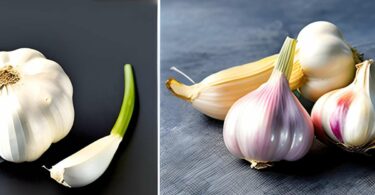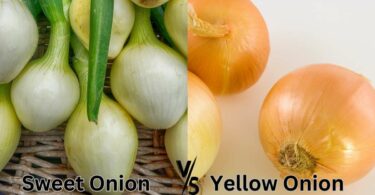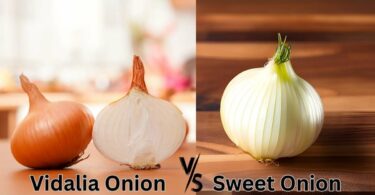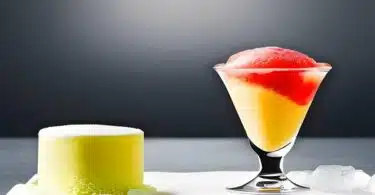The Great Culinary Debate… The kitchen, a place where flavors dance and aromas mingle, is also home to debates that stir the pot. One such debate revolves around the use of red onions and shallots. What makes them unique? How do they differ? The importance of onions in cooking cannot be overstated, and as we embark on this journey, we will explore both red onions and shallots in great detail.
The Importance of Onions in Cooking
Onions are the bedrock of many dishes, providing a flavorful foundation that tantalizes the taste buds. They’ve been used for centuries in different culinary traditions, bridging gaps between cultures. Whether caramelized to a golden brown or used as a subtle background note, onions are versatile and essential.
When it comes to selecting the perfect tool to chop or process onions, nothing beats the Best Cuisinart Food Processors. From fine dicing to coarse chopping, these machines can do it all. For those looking to compare food processors, the detailed guide on Breville Sous Chef 12 vs 16 can offer valuable insights into these two outstanding models.
Red Onions and Shallots: A Brief Overview
Red onions, known for their vibrant color and robust flavor, are often used in salads, salsas, and grilled dishes. Shallots, on the other hand, are milder and more refined, perfect for sauces and dressings. Understanding these subtle differences can transform your cooking experience.
The Distinctive Characteristics
Appearance and Texture: More Than Meets the Eye
Red onions are usually larger with a deep purple skin. Their flavor is sharp, with a hint of sweetness. Shallots, however, are smaller and often resemble garlic in their appearance. They have a delicate texture, making them ideal for fine cooking.
Taste Profiles: A Flavorful Journey
The taste of red onions is bold and assertive, while shallots offer a more gentle flavor profile, with notes of garlic. Chefs and home cooks alike appreciate these differences, using each in specific recipes to create harmonious dishes.
Culinary Uses: Where Each Shines
Red onions are perfect for raw applications or where a strong onion flavor is desired. Shallots are often used in French cuisine, especially in delicate sauces. Knowing when to use each can elevate a dish from ordinary to extraordinary.
Nutritional Breakdown
Health Benefits: Good for More Than Tears
Both red onions and shallots bring more to the table than just flavor. They’re packed with vitamins, minerals, and antioxidants, each offering unique health benefits.
Red onions are known for their high content of quercetin, an antioxidant that may help fight inflammation and reduce blood pressure. Shallots, containing a rich amount of allicin, have antibacterial properties that promote overall well-being.
Calories, Vitamins, and Minerals: A Detailed Analysis
Analyzing the nutritional content, red onions and shallots are low in calories but rich in essential nutrients.
- Red Onions: A good source of Vitamin C and B6, fiber, and various minerals like potassium and manganese.
- Shallots: Contain higher levels of iron and copper compared to red onions, with similar Vitamin C content.
Understanding these nutritional profiles helps you make informed culinary choices, aligning with your dietary needs and preferences.
Growing and Harvesting
From Farm to Table: A Gardener’s Guide
Growing red onions and shallots can be a rewarding endeavor, allowing you to enjoy them fresh from the garden.
- Red Onions: Require well-drained soil, plenty of sunlight, and regular watering. The bulbs are ready to harvest when the tops begin to yellow and fall over.
- Shallots: Prefer similar conditions but are generally more resilient. They can be harvested a bit earlier, as soon as the bulbs are well-formed.
Storage and Preservation: Keeping Them Fresh
Once harvested, both red onions and shallots should be properly cured and stored.
- Red Onions: Store in a cool, dry place with good airflow. They can last several months if stored correctly.
- Shallots: They need similar conditions but can be more sensitive to moisture. Proper storage ensures that they retain their delicate flavor.
Recipes and Cooking Techniques
Kitchen Magic: Cooking with Red Onions and Shallots
The culinary applications for red onions and shallots are vast and varied. Red onions can be grilled, roasted, or pickled, while shallots excel in sautés, stews, and marinades.
- Red Onions: Try them in a tangy salsa or a hearty stew. The strong flavor stands up to bold spices and herbs.
- Shallots: Excellent in vinaigrettes or as a base for creamy sauces. Their mild flavor complements other delicate ingredients.
Signature Dishes: A Taste of Tradition
Different cultures have embraced red onions and shallots, making them stars in signature dishes.
- Red Onions: Think of Greek salads, Mexican fajitas, or Indian curries.
- Shallots: A key ingredient in French shallot confit or Thai shallot crisps.
Both offer a world of flavors, waiting to be explored in your kitchen.
Conclusion: Red Onion or Shallot? The Choice is Yours
Summary: A Flavorful Decision
Having traversed the world of red onions and shallots, we’ve discovered that each offers its unique attributes. From their appearance and taste to their nutritional benefits and culinary uses, both have a special place in the kitchen. Whether you are creating a bold, flavor-packed dish or a delicate, sophisticated sauce, understanding the nuances of these two ingredients can transform your cooking.
Personal Preferences: Finding Your Favorite
It’s not about choosing one over the other; it’s about embracing the diversity they bring to the table. Experiment with different recipes, explore various cooking techniques, and indulge in the sensory experience.
- Red Onions: Ideal for those who love a punchy flavor and a bit of crunch. Try them in burgers, salads, or stir-fries.
- Shallots: For the refined palate, enjoy the subtle sweetness and complexity in sauces, roasts, or lightly sautéed dishes.
By integrating both red onions and shallots into your culinary repertoire, you can cater to different tastes and preferences, creating meals that resonate with everyone.
Bonus Section: Expert Tips and Tricks
Selecting the Best: A Shopper’s Guide
When shopping for red onions and shallots, look for firm bulbs with no soft spots or visible mold. The skin should be tight and glossy.
- Red Onions: Should feel heavy for their size, indicating freshness.
- Shallots: Opt for those with a more coppery hue, a sign of good quality.
Mastering the Chop: Knife Skills 101
Chopping onions and shallots can be tricky, but with a little practice and the right technique, you can master the skill.
- Red Onions: Use a sharp knife and make even, vertical cuts for a uniform chop.
- Shallots: Being smaller, take extra care to slice them thinly, using a gentle sawing motion.
Pairing with Herbs and Spices: A Flavor Symphony
Understanding what herbs and spices pair well with red onions and shallots can enhance your dishes.
- Red Onions: Pairs beautifully with thyme, rosemary, and bold spices like chili.
- Shallots: Complements softer flavors like tarragon, sage, or white pepper.
In conclusion, the world of red onions and shallots is rich and flavorful, offering endless possibilities in the kitchen. By embracing their unique characteristics and experimenting with various recipes, you can create culinary masterpieces that delight the senses.
This comprehensive guide provides a 360-degree view of red onions and shallots, empowering you to make informed choices and explore new culinary horizons. From farm to table, let these two remarkable ingredients inspire your culinary creativity. Enjoy the adventure!

